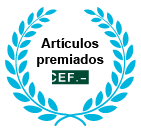Una visión del marketing 360˚. Análisis comparativo entre dos estrategias de contenido digital en el sector cosmético
DOI:
https://doi.org/10.51302/marketing.2022.852Palabras clave:
marketing 360, digitalización, presencia web, e-commerce, posicionamiento, social mediaResumen
La comunicación y el marketing digital en el sector de la cosmética han ido transformándose en una comunicación cada vez más digital, debido a los cambios en el comportamiento del consumidor, la aparición e implicación de las redes sociales como nuevas formas de comunicarse, el desarrollo de las TIC y la consolidación de internet. La digitalización deja de ser una opción para convertirse en una obligación, ya que se presenta como una propuesta eficaz gracias a todas las oportunidades que nos ofrece. En una sociedad completamente sumergida en los dispositivos digitales interconectados, el contenido digital y la presencia web se abren camino para llegar a los usuarios a través de diferentes estrategias y planteamientos que se han ido recopilando en el presente trabajo. Una visión del marketing digital 360º nos ofrece visualizar los componentes más importantes que participan activamente en un plan de marketing digital en relación con el sector cosmético, adecuándose al comportamiento del consumidor beauty en internet. Por otro lado, se pretende comprender cómo los resultados de marketing se pueden someter a un proceso de medición exhaustivo, gracias a la analítica digital, que nos permite su comprensión y posterior propuesta de mejora. Para su desarrollo, se ha realizado una revisión literaria sobre el sector de la cosmética y de los aspectos más relevantes que participan activamente en un plan digital con el objetivo de recopilarlos y esclarecer diferentes conceptos. Por último, en términos de analítica web se realizará un estudio de un caso a través de diferentes herramientas, realizando un análisis de dos marcas con presencia en la web.
Descargas
Citas
Arbildi, I. (2005). Posicionamiento en buscadores: Una metodología práctica de optimización de sitios web. http://profesionaldelainformacion.com/contenidos/2005/marzo/3.pdf
Cortés, V. S. (2011). Marketing digital: como herramienta de negocios para PyMES [Tesis de Ingeniería]. Universidad de Chile. https://repositorio.uchile.cl/handle/2250/116571
Geysser, W. (2022) El Estado del Marketing de Influencers 2021: Informe Benchmark. https://influencermarketinghub.com/es/informe-bechmark-marketing-de-influencers-2019/
Gutiérrez-Rubí, A. (2014) 6 rasgos clave de los millennials, los nuevos consumidores. Forbes. https://www.forbes.com.mx/6-rasgos-clave-de-los-millennials-los-nuevos-consumidores/
González, Z., García, I. y Mcdonald, L. (2016) Bloggers cómo influenciadores de consumo, referencia y opinión en el sector de productos de cosmética femenina. RIIT.
Liberos, E. (2011). El libro del comercio electrónico. (2.ª ed.). ESIC.
Macía F. (2015). Marketing on-line 2.0. Cómo atraer y fidelizar clientes en internet. Anaya Multimedia.
Marqués, V. (2018). MKT digital 360 (2.ª ed.). Conjuntura actual.
Monteverde, P. (2018). Las marcas de cosmética en redes sociales en España y LATAM. Hubspot.
Muñoz-Domínguez, G. y Díaz-Soloaga, P. (2020). Co-creación, contenido y comunidad: nuevas bases del engagement digital en marcas de cosmética. En Comunicación y diversidad [comunicación]. VII Congreso Internacional de la Asociación Española de Investigación de la Comunicación (AE-IC). Valencia, España, 28-30 de octubre, pp. 319-330. http://profesionaldelainformacion.com/documentos/libro_ae-ic/munoz_diaz.pdf
Orús, A. (2022). Volumen de negocio del comercio electrónico dentro de España de perfumería, cosméticos y artículos de tocador del primer trimestre de 2015 al cuarto trimestre de 2020. Statista. https://es.statista.com/estadisticas/1034872/facturacion-comercio-electronico-por-compras-en-perfumeria-cosmeticos-y-articulos-de-tocador-dentro-de-espana/
Stanpa. (2020). Memoria anual. 2019. Stanpa
Descargas
Publicado
Cómo citar
Número
Sección
Licencia
Derechos de autor 2022 Estefania de Felipe Dorado; Estíbaliz Pérez Asperilla

Esta obra está bajo una licencia internacional Creative Commons Atribución-NoComercial-SinDerivadas 4.0.





















